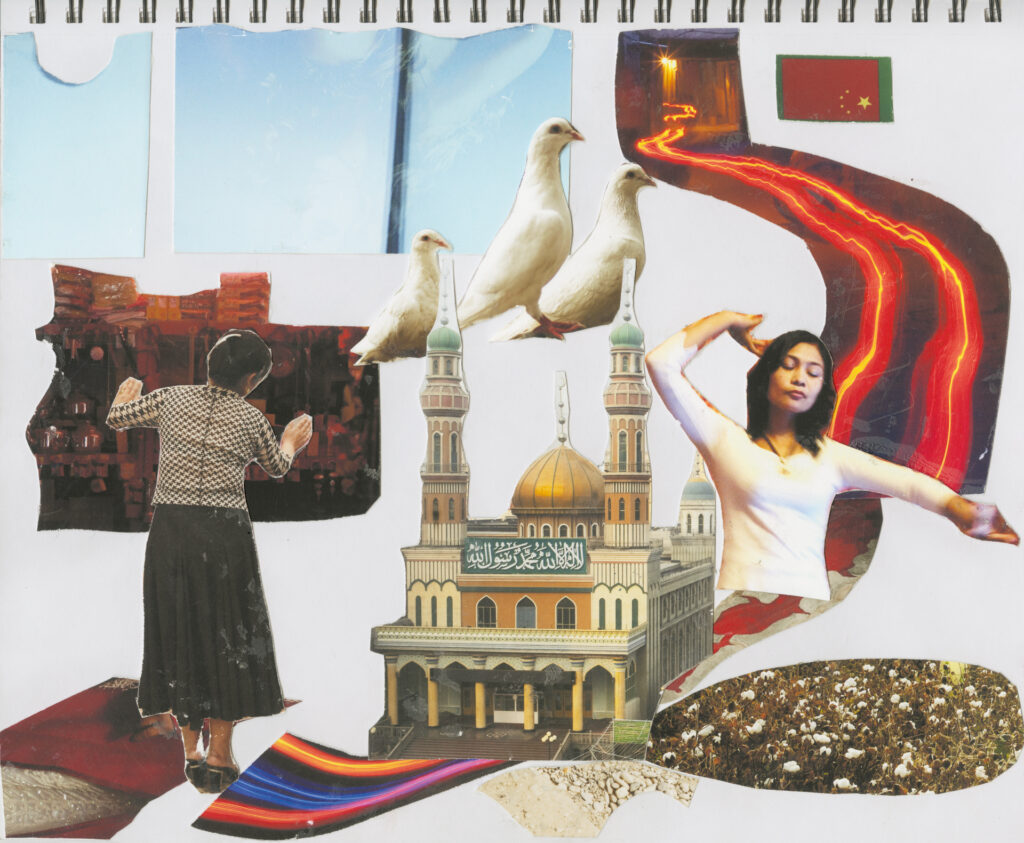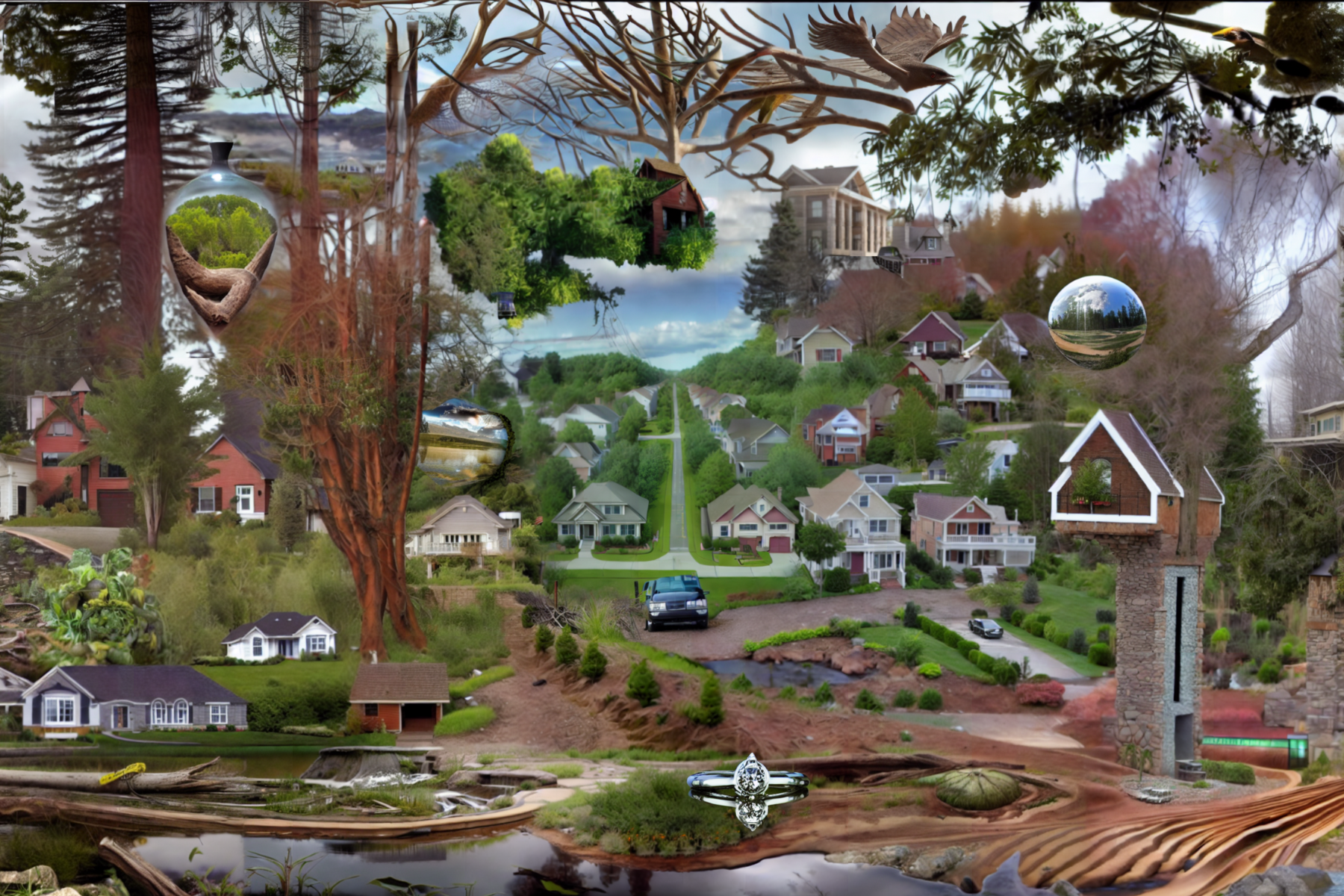Agony of the New Bed
2018 - Installation (Installation)
10 pieces, 31.5 x 21.5 x 16.5 cm each
Sheelasha Rajbhandari
Agony of the New Bed by Sheelasha Rajbhandari brings out the familiar yet often ignored reality of gender discrimination and taboos built within the construct of marriage. Part of the artist’s series Marriage Taboos , these portraits of women from different age groups in Nepal are staged on cotton mattresses placed on miniature golden matrimonial beds. The embroidered text on top of the portraits in golden threads are a representation of the range of vulnerable and resilient emotions experienced by women and the social beliefs towards them. Gold is a major part of many Asian marriages both socially and culturally. Marriage is celebrated with the exchanges of costly gifts and brides are decorated with gold and other precious jewellery along with shiny red and gold clothes. But this ornate spectacle also works to hide a bride’s identity. Similarly to many other countries, in the traditional marriage system of Nepal, ownership of a daughter is transferred from a father to a husband. Brides are encouraged to shift their identities and adopt their husbands’. This practice has contributed to the preference of sons over daughters, as daughters leave and assimilate, while sons continue the family lineage. From an early age women are trained to be subservient, loyal wives and mothers and to perfect her ‘duty’ of managing household chores. After marriage women are supposed to relegate any feelings towards her parents or her career to second place. Vast amounts of social research has documented the fact that a high proportion of married women become victims of domestic and sexual violence.
Sheelasha Rajbhandari is a visual artist, cultural organizer, and co-founder of the artist collective Artree Nepal (founded in 2013) based in Kathmandu. She is interested in exploring alternative and plural narratives through folktales, folklore, oral histories, mythologies, material culture, performance, and rituals and placing them as evidence, along with references to mainstream history and narratives. Her long-term research projects and artistic practice often juxtapose these contradictions and synthesize the knowledge and experiences that result from individual and collective discourses. Through her work, she frequently tries to encounter simple yet socially taboo subject matters, with a focus on women’s struggles, celebrating their resilience. Her recent works explore the current transformation of Nepal from a once important centre for trans-Himalayan trade to a geopolitical situation in flux between the two emerging world powers of India and China. Rajbhandari is very careful about choosing materials and methods that align with her conceptual framework. She prefers mediums and materials that add meaning to ideas and have their own significance. With her partner Hit Man Gurung she works as a cultural organizer in various projects and both are active as co-founders of the artist collective Artree Nepal. Together they also conceived 12 Bishakh – Camp.Hub Post Earthquake Community Art Project , a seminal project carried out in the aftermath of the 2015 Kathmandu Valley Earthquake.
Colors:
Related works sharing similar palette

© » ARTFORUM
New York’s Rubin Museum to Shutter, Pursue Decentralized Model – Artforum Read Next: ITALIAN CULTURE MINISTER VITTORIO SGARBI EXITS UNDER PRESSURE Subscribe Search Icon Search Icon Search for: Search Icon Search for: Follow Us facebook twitter instagram youtube Alerts & Newsletters Email address to subscribe to newsletter...

© » KADIST
Mohamed Bourouissa
2008Temps Mort is the result of one year of mobile phone exchanges of still images and videos between the artist and a person incarcerated in prison...

© » KADIST
Shimabuku
2006For the two-channel work Asking the Repentistas – Peneira & Sonhador – to remix my octopus works Shimabuku asked two Brazilian street singers to compose a ballad about his previous works with octopi (in which he created traditional Japanese ceramic vessels to catch octopi, with a fisherman who took him on his boat to test them out as we can see on one of the channel)...

© » KADIST
Joana Hadjithomas & Khalil Joreige
2017Produced for the Prix Marcel Duchamp and presented at the Centre Pompidou in October 2017, the installation Uncomformities is comprised of photographs, archaeological drawings, and narratives, based on the analysis of core samples from different sites in Beirut, Paris and Athens...

© » KADIST
Frieda Toranzo Jaeger
2017This triptych is based on a Tesla whose interior the artist customized on the Tesla website...

© » KADIST
Mohamed Bourouissa
Mohamed Bourouissa’s “ Shoplifters” Series was created in 2014-2015, in a neighborhood supermarket in Lefferts Garden, Brooklyn...

© » 1854 PHOTOGRAPHY
The power of collaboration, laid out for all to see - 1854 Photography Subscribe latest Agenda Bookshelf Projects Industry Insights magazine Explore ANY ANSWERS FINE ART IN THE STUDIO PARENTHOOD ART & ACTIVISM FOR THE RECORD LANDSCAPE PICTURE THIS CREATIVE BRIEF GENDER & SEXUALITY MIXED MEDIA POWER & EMPOWERMENT DOCUMENTARY HOME & BELONGING ON LOCATION PORTRAITURE DECADE OF CHANGE HUMANITY & TECHNOLOGY OPINION THEN & NOW Explore Stories latest agenda bookshelf projects theme in focus industry insights magazine ANY ANSWERS FINE ART IN THE STUDIO PARENTHOOD ART & ACTIVISM FOR THE RECORD LANDSCAPE PICTURE THIS CREATIVE BRIEF GENDER & SEXUALITY MIXED MEDIA POWER & EMPOWERMENT DOCUMENTARY HOME & BELONGING ON LOCATION PORTRAITURE DECADE OF CHANGE HUMANITY & TECHNOLOGY OPINION THEN & NOW Uyghur Community © Carolyn Drake Gathering hundreds of images and contributors, a new book challenges narratives on photographic history and collaboration On 13 March 2021, Patsy Stevenson attended a vigil in London for Sarah Everard, a young woman who had been raped and killed by a serving police officer...

© » KADIST
Phoebe Collings-James
2021The Subtle Rules the Dense is a series of masks/torsos/body plates that Phoebe Collings-James cast from mannequins and then worked by hand...












